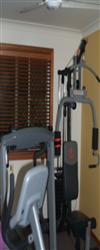
Online Home Study - Health and Fitness - Fitness Leadership Course
- learn about the nature of the fitness industry
- learn skills to explain exercise principles to clients
- understand the importance of exercise and human health.
An accredited advanced diploma module and a component of the Fitness Leaders Certificate.
This course covers theory contained within a fitness leaders certificate.
Pre-requisites: A first aid certificate (e.g. St Johns) and an understanding of human biology (e.g. Human Biology 1A).